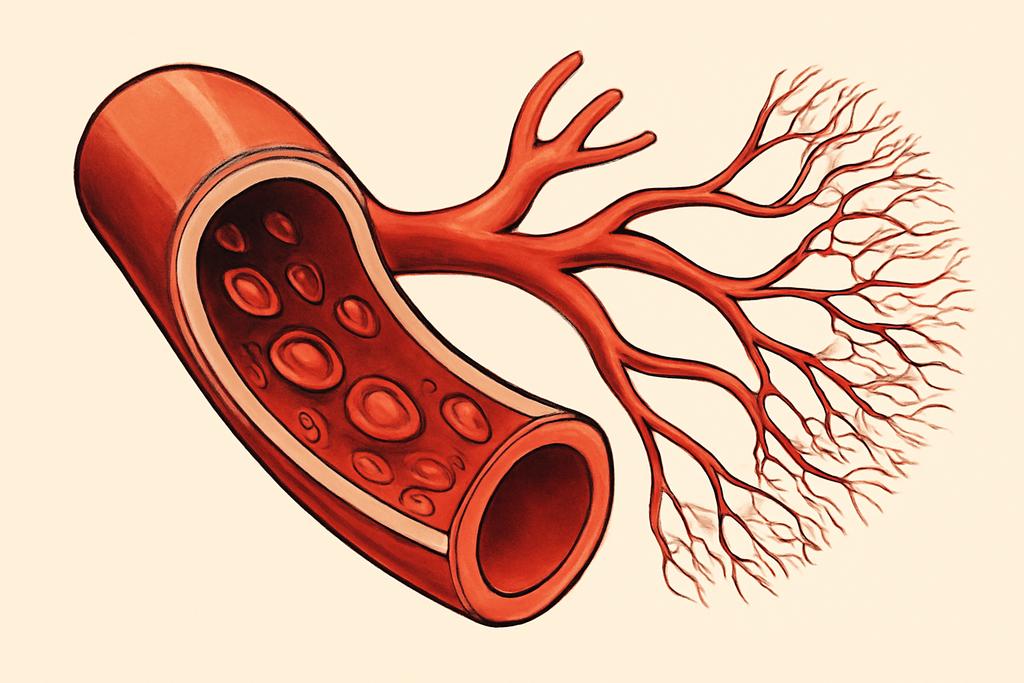A New Way to Model Blood Flow
The human circulatory system is a marvel of engineering. A vast network of vessels, from the largest arteries to the tiniest capillaries, delivers oxygen and nutrients to every cell in the body. Understanding blood flow through this intricate system is crucial for diagnosing and treating cardiovascular disease. But modeling blood flow in three dimensions, with its complexities of branching vessels and varying geometries, is a computationally intensive task. What if there was a simpler, more efficient way to understand the core principles at play?
The Hierarchy of Models
Researchers at the University of Wisconsin – Madison, Laurel Ohm and Sarah Strikwerda, have developed a groundbreaking approach. They propose a hierarchy of models—think of it as a set of Russian nesting dolls, each containing increasingly detailed descriptions of blood flow. The outer doll is the most complex, a 3D-3D model solving the full Navier-Stokes equations for fluid flow within the vessel and Darcy’s law for flow in the surrounding tissue. The middle doll is a 3D-1D model which assumes that the pressure within the vessel is constant across each cross section (an assumption justified by the innermost doll). And the innermost doll? That’s a completely 1D model, which describes the flow only along the length of the vessel, and uses an elegant Green’s function approach to capture the interactions between the vessel and the surrounding tissue.
The cleverness of this approach lies not just in its simplicity, but in its rigor. Ohm and Strikwerda don’t just propose these models; they rigorously prove that the simpler models converge to the more complex ones as the vessel radius shrinks. Imagine a river flowing through a valley: the 3D-3D model accounts for every eddy and current. The 3D-1D model, however, simplifies the flow within the river, focusing on the average movement of water. The 1D model, meanwhile, captures the essence of the river’s interaction with the valley’s slopes. Importantly, Ohm and Strikwerda show that this drastic simplification does not come at the cost of accuracy. Under certain conditions, the 1D model provides a surprisingly accurate approximation.
Why This Matters
This new approach has profound implications for our ability to model and simulate blood flow. The 3D-3D model, while accurate, can be computationally expensive, making it impractical for large-scale simulations. The 1D model, however, can solve the same problems significantly faster, making complex simulations of entire vascular networks feasible. This has wide-ranging applications, including:
- Improved Diagnosis: Simulating blood flow in specific patients’ vessels could provide more accurate predictions of blood flow in the individual.
- Personalized Treatments: Designing more effective medical devices, such as stents or implants, would benefit from more detailed computational models.
- Drug Delivery: Studying how drugs are transported through the circulatory system could benefit from these more complex and scalable models.
The Surprising Simplicity
What’s truly remarkable about Ohm and Strikwerda’s work is how it manages to capture essential details of complex blood flow with surprising mathematical simplicity. The 1D model captures the key interplay between the interior and exterior pressures, despite drastically reducing the dimensionality. While this simplification requires careful theoretical justification, the resulting model allows for easier analysis and a wider range of applications. The result is a more powerful computational toolkit for understanding the complexities of human physiology.
Future Directions
Ohm and Strikwerda’s work is a significant step forward, but there is much more to explore. The models could be further refined to account for additional factors such as vessel elasticity, time dependence, or the effects of blood viscosity. These sophisticated models should become even more computationally feasible using this framework. The insights gained from this work could transform our understanding of how blood flows, and help us develop better diagnostics, therapies, and medical devices in the future.










